The more things change, the more they stay the same.
A century ago, the city of Cleveland was eager to work with the private railroads to replace its undersized, outdated lakefront train station with a glamorous new downtown terminal. The new lakefront station would be a key component of its ambitious Group Plan designed by Daniel Burnham to remake the central business district into a setting of beautiful public buildings built along a park-like mall.
But two brothers from the eastern suburbs began developing Shaker Heights, rapid transit lines and a $1.8 billion (in today’s dollars) downtown station complex for railroads, public transportation, office towers, luxury hotel, department store and post office. Both plans were achieved, although the Group Plan was built without the railroad station. The Van Sweringen brothers‘ Cleveland Union Terminal was constructed instead, crowned by Terminal Tower.
In the present day, we have billionaires Jimmy Haslem and Dan Gilbert planning their own dramatic visions for different parts of downtown. Cleveland Browns owner Haslem announced his vision for the downtown lakefront earlier this year. A mix of residential, office and retail/restaurant offerings in low-, mid- and high-rise buildings would be constructed around FirstEnergy Stadium where his rejuvenated football team plays.
Haslem Sports Group announced a long-range vision for developing the downtown Cleveland lakefront with a mix of uses that depends on significant infrastructure investments. Those include de-emphasizing the Shoreway highway, extending the park-like malls of Group Plan fame over the lakefront railroad tracks, and constructing a multi-modal transportation center within that mall extension (AoDK).
And we have Bedrock CEO Kofi Bonner (a former Browns executive) announced his company’s aggressive vision for downtown’s riverfront, as part of the city’s Vision for the Valley. Gilbert, owner of the Cleveland Cavaliers basketball team, founded Detroit-based Bedrock as well as Rocket Mortgage which is experiencing incredible growth in business and employment, including at its significant back-office in Cleveland.
NEOtrans reported in January that Bedrock is seeking a new office building for Rocket Mortgage in Cleveland as it is about to outgrow its old offices in the Higbee Building. And sources close to Bedrock have been saying for more than a year that the real estate company has wanted to develop residential buildings and recreational settings along the riverfront.
Today’s details-sparse announcement by Bedrock seems premature if not for several factors. One is the imminent offering of the first of at least four annual opportunities to win up to $40 million in Transformational Mixed Use Development (TMUD) tax credits from the state.
In Cleveland, the applicant project must have a mix of uses (ie: residential, office, retail, parking etc.), be at least 15 stories tall, measure 350,000 square feet or more, and/or be part of a multi-phase development that offers a combination of those characteristics when all those phases are taken together. Bedrock is likely to submit one or more Cleveland projects for a TMUD credit this year and in coming years.
“The market will ultimately determine the outcome,” Bonner said.
Bedrock is taking a holistic view of downtown Cleveland’s riverfront just as it took a holistic view of Woodward Avenue in downtown Detroit. There, Bedrock has made significant acquisitions of properties on which they built new and renovated old, populating each with a vibrant mix of residential, office, hotel and ground-floor retailers, some of whom started out rent-free. A similar approach will be taken with their Cleveland properties.
“In the next 30 days will be a series of announcements of at least three African-American-owned businesses to locate in Tower City with 10 more leases to follow,” Bonner added. “They will focus on soft goods, food, beverages, entertainment and some retail. Tower City isn’t going anywhere.”
Bedrock is starting long-range, wide-screen planning in Cleveland with a timeline of 20 to 30 years and a 130-acre drawing board. Bedrock has an ambitious goal of constructing thousands of “inclusive” housing units, millions of square feet of offices and an accessible, recreational riverfront.
All will be built in close proximity of each other so residents can live, work, shop, play and otherwise achieve all of their daily needs within a 15-minute walk, Bonner said. Not only does that reduce driving and our carbon footprint, it also fosters a sense of community often missing in sprawled-out, disconnected American cities.
Connecting those American cities to each other is what railroads once did for passengers and might do again. Haslem’s lakefront plan includes a multimodal transit center hosting Amtrak, Greyhound, Greater Cleveland Regional Transit Authority light-rail and bus, plus more parking and better pedestrian links with the central business district.
After the federal government renews its five-year surface transportation program, Amtrak wants to turn Cleveland’s sleepy, little train depot tucked away on the lakefront into a mini-hub over the next 5-15 years. Now with just four nightly trains, Amtrak proposes to develop round-the-clock services with nearly two dozen trains per day to places like Detroit, Chicago, Cincinnati, Columbus, Pittsburgh, Philadelphia, Washington DC, Buffalo, Boston and New York City.
In cities like Albany, NY, Harrisburg, PA, Milwaukee, St. Louis, Portland, OR and Seattle with similar service levels, their Amtrak stations see annual passenger boardings range from 350,000 to 800,000 per year. For context, the Cleveland Browns’ regular season home attendance in 2019 was 539,448. All Aboard Ohio, a nonprofit passenger rail and transit advocacy group, urged that mini-hub be located at Tower City.
According to a source who spoke off the record, Bedrock is trying get the city’s support for putting a multi-modal transportation center at Tower City as part of its grand plans it announced today that might also include a downtown extension of the Cuyahoga Valley Scenic Railroad. In Bedrock’s conceptual renderings, a “Transit Center” (see image) is shown as part of the new buildings south of Huron Road but no other details were provided.
All Aboard Ohio’s vision for locating Amtrak’s proposed mini-hub and extending Cuyahoga Valley Scenic Railroad trains to Tower City Center. Although Bedrock’s renderings don’t fully account for it, NEOtrans has learned that Bedrock executives are very interested in the idea of returning passenger railroad service to the former Cleveland Union Terminal (AAO).
In his remarks today, Bonner spoke vaguely of the need for securing federal infrastructure funds in order to carry out Bedrock’s grand plans. When pressed, he said the funding would go toward rebuilding roads, conduits below roads, transit and waterfront facilities, presumably bulkheads and boardwalks.
For Amtrak to expand in Ohio would likely require the support of the governor and state legislature. Neither has endorsed Amtrak’s expansion plans like Pennsylvania has, including extending service from Pittsburgh to Cleveland. However, local, regional and federal leaders in Northern Ohio, Indiana and Illinois have recently urged development of Chicago-Toledo-Cleveland Amtrak service.
Another option for Tower City may be an Amtrak competitor — Brightline. Unlike Amtrak, Brightline is a private-sector company that uses its station-area developments for value capture and ridership. In other words, the presence of the trains enhances the performance of the surrounding real estate which in turn provides ridership and revenue to the trains. In Miami, its newly built Central Station is topped by three skyscrapers. It is expanding its 79 mph service north of West Palm Beach to Orlando and eventually to Tampa with trains cruising at up to 125 mph.
Brightline recently released a list of routes it would like to develop following the passage of a rail-friendly federal infrastructure program (see image). One of those was an upside-down T-shaped route linking Cleveland-Toledo-Chicago, Cleveland-Toledo-Detroit, and Detroit-Toledo-Chicago. Brightline will only consider developing routes that promise more than 1 million riders per year. A source close to Brightline confirmed the railroad’s interest in serving Cleveland, but a station has not been identified.
To achieve the riverfront development, Mayor Frank Jackson said a tax-increment financing district is under consideration that would require the support of City Council. Baiju Shah, CEO of the Greater Cleveland Partnership, said the riverfront vision would help accommodate downtown’s projected population growth to 30,000 residents by 2030.
“This project which further aligns and activates the vision for valley is a transformative opportunity for the community,” Shah said. “This is a moment of significant alignment.”
END

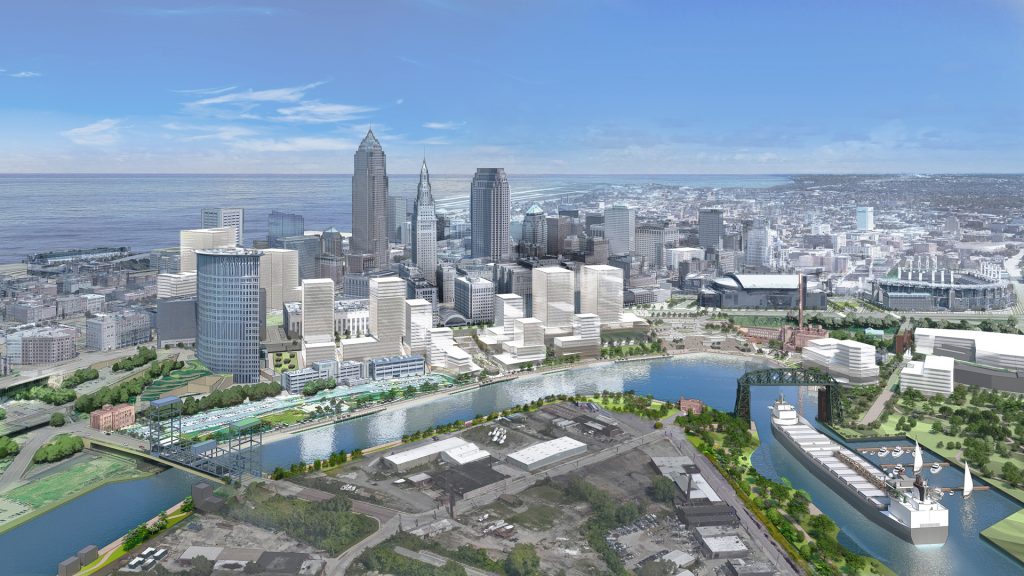

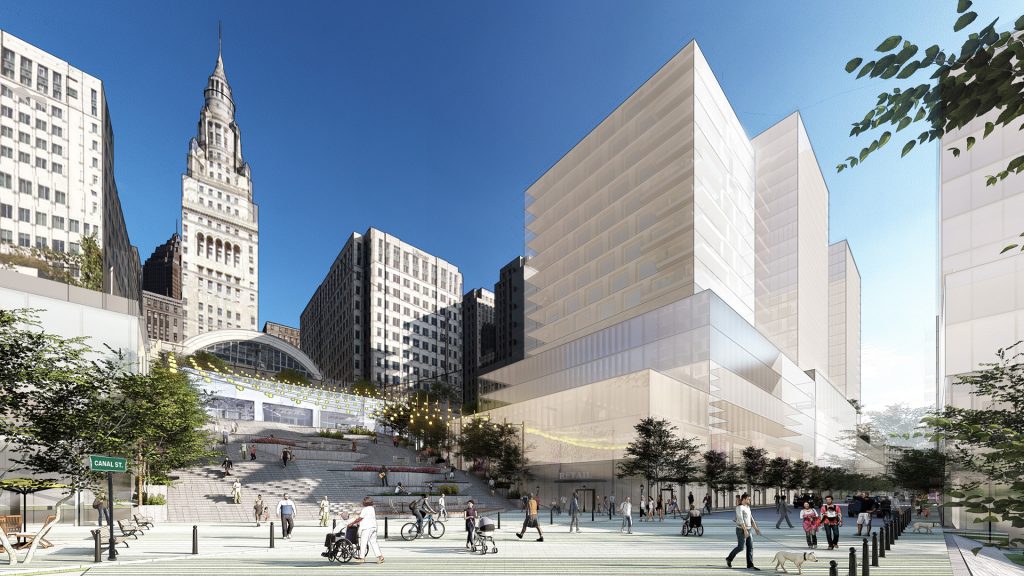
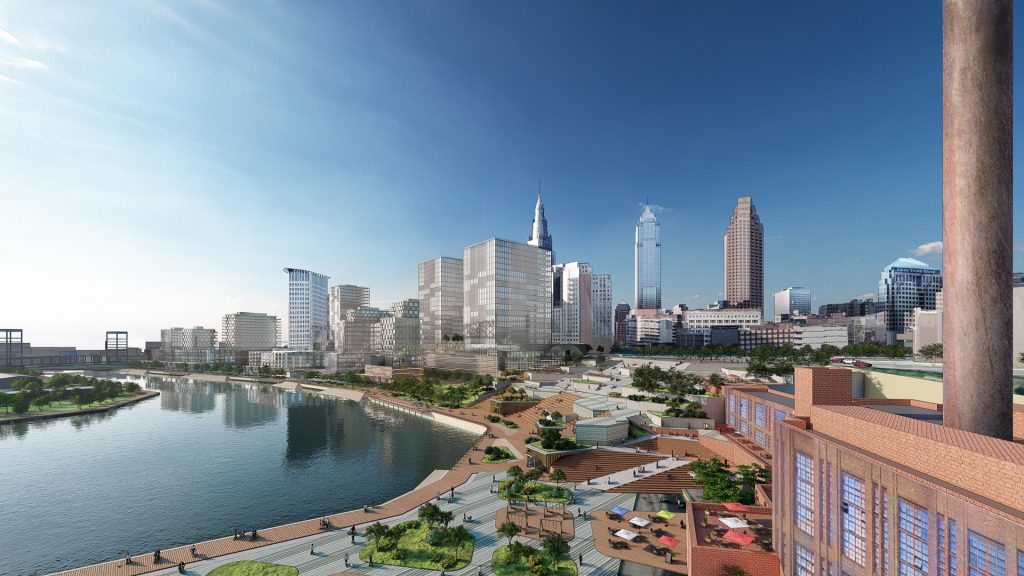

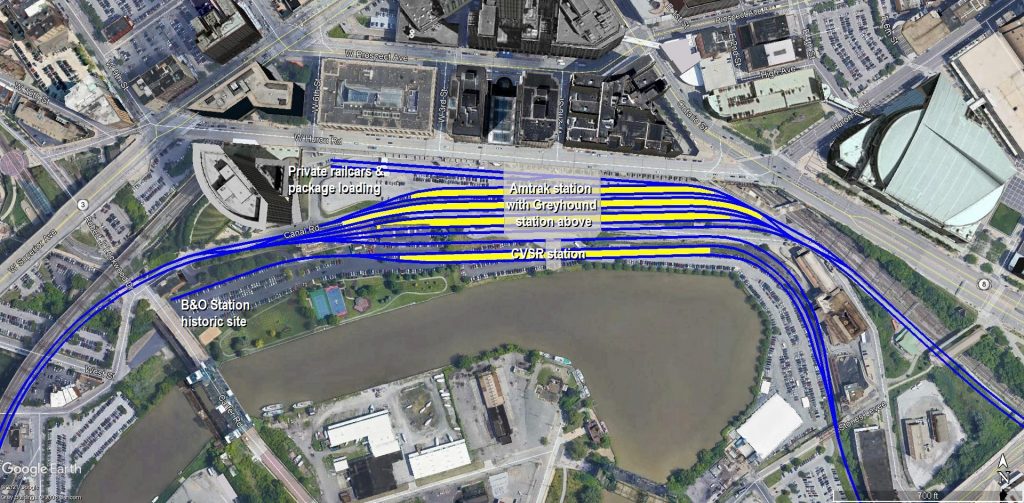
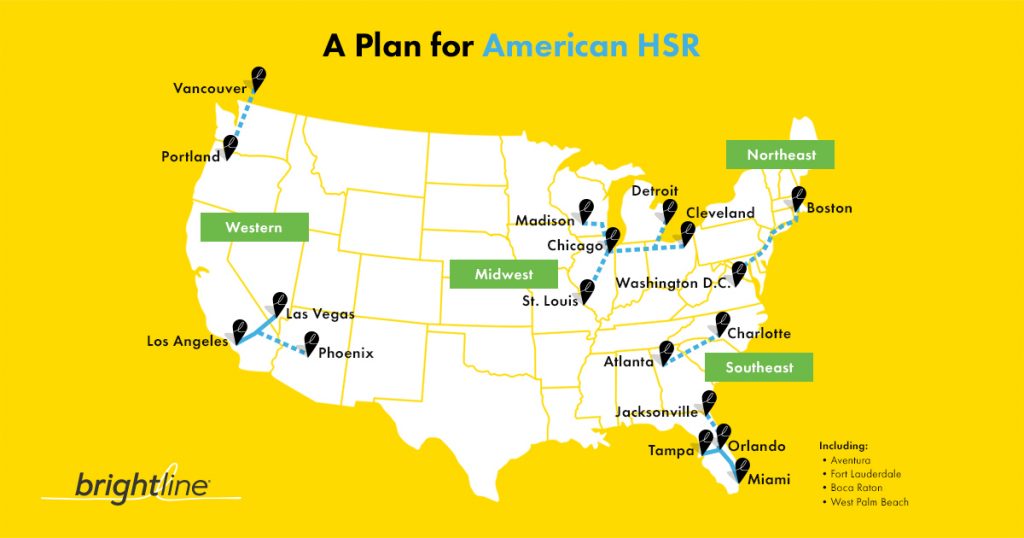
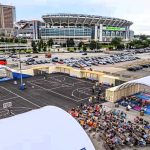
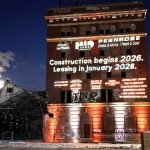

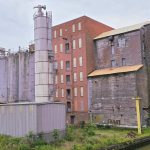
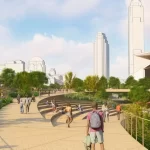
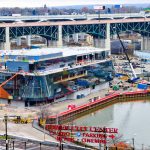
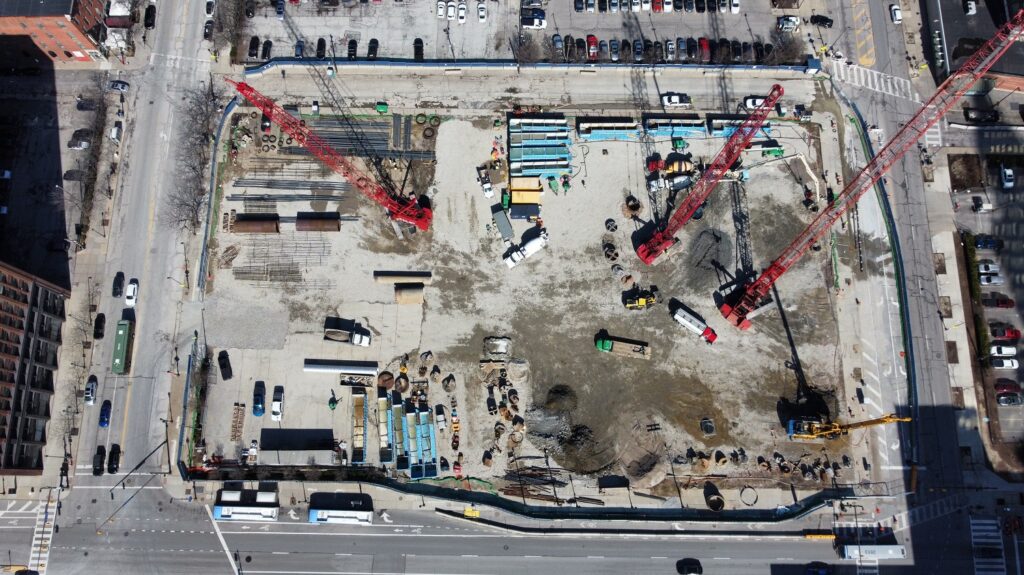
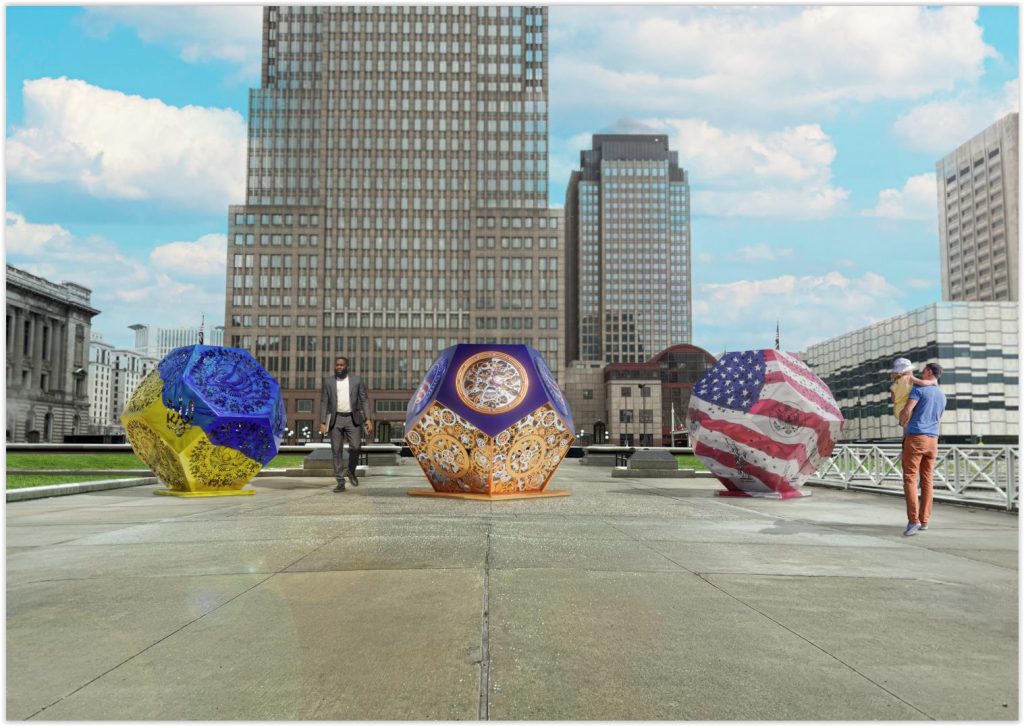
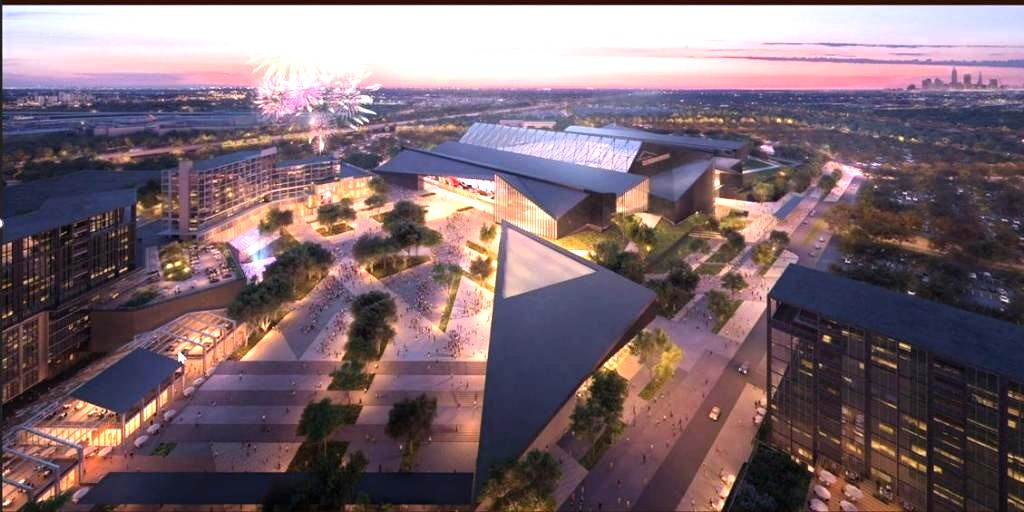
Comments are closed.